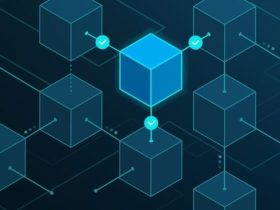Dublin, Oct. 22, 2021 (GLOBE NEWSWIRE) — The “Critical Infrastructure Protection Market: Global Industry Trends, Share, Size, Growth, Opportunity and Forecast 2021-2026” report has been added to ResearchAndMarkets.com’s offering.
The global critical infrastructure protection market exhibited moderate growth during 2015-2020. Looking forward, the market is expected to grow at a CAGR of 3.5% during 2021-2026. Keeping in mind the uncertainties of COVID-19, the analyst is continuously tracking and evaluating the direct as well as the indirect influence of the pandemic on different end use industries. These insights are included in the report as a major market contributor.
Critical infrastructure protection (CIP) refers to a security solution used for safeguarding systems, assets and networks from potential threats. It consists of various solutions, such as firewalls, identity and access management, risk and compliance management, antiviruses, intrusion detection systems and encryption systems. These systems protect information related to power grids, railways, nuclear plants and hydro plants from cyberattacks that can threaten public safety, attack national security or cause environmental disasters. CIP solutions also use wireless technology, industrial control systems (ICS), operation technology (OT) and Supervisory Control and Data Acquisition (SCADA) systems to expose additional security vulnerabilities.
The increasing instances of security breaches and cyber-attacks that pose a threat to infrastructural development across the globe are among the key factors driving the growth of the market. The rising concerns for the security and safety of government information and the increasing trend of Bring-Your-Own-Devices (BYOD) across industries have enhanced the requirement for CIP systems. The rapidly expanding internet and interconnected network architecture have influenced federal and security organizations to safeguard cyberspace and minimize threat vulnerabilities. Additionally, various technological advancements, such as the advent of the Internet of Things (IoT), big data, cloud computing and artificial intelligence (AI) solutions, are acting as other growth-inducing factors. They offer scalable and cost-effective data security solutions, owing to which CIP solutions are widely being deployed. Other factors, including improvements in the information technology (IT) infrastructure, along with the increasing adoption of risk management services, are projected to drive the market further.
Breakup by Component
- Solutions
- Physical Security Solutions
- Physical Identity and Access Control Systems
- Perimeter Intrusion Detection Systems
- Video Surveillance Systems
- Screening and Scanning
- Others
- Cyber Security Solutions
- Encryption
- Network Access Control and Firewalls
- Threat Intelligence
- Others
- Services
- Designing and Integration Services
- Consultation Services
- Risk Management Services
- Maintenance and Support Services
Breakup by End User
- Financial Institutions
- Government
- Defense
- Transport and Logistics
- Energy and Power
- Commercial Sector
- Others
Breakup by Region
- North America
- United States
- Canada
- Asia Pacific
- China
- Japan
- India
- South Korea
- Australia
- Indonesia
- Others
- Europe
- Germany
- France
- United Kingdom
- Italy
- Spain
- Russia
- Others
- Latin America
- Brazil
- Mexico
- Others
- Middle East and Africa
Competitive Landscape
The competitive landscape of the industry has also been examined with some of the key players being BAE Systems PLC, Lockheed Martin Corporation, General Dynamics Corporation, Northrop Grumman Corporation, Honeywell International Inc., Airbus SE, Hexagon AB, Waterfall Security Solutions, General Electric Company, McAfee Inc. (TPG Capital and Intel Corporation) and Raytheon Company (United Technologies Corporation).
Key Topics Covered:
1 Preface
2 Scope and Methodology
3 Executive Summary
4 Introduction
4.1 Overview
4.2 Key Industry Trends
5 Global Critical Infrastructure Protection Market
5.1 Market Overview
5.2 Market Performance
5.3 Impact of COVID-19
5.4 Market Forecast
6 Market Breakup by Component
6.1 Solutions
6.1.1 Market Trends
6.1.2 Market Breakup by Type
6.1.2.1 Physical Security Solutions
6.1.2.1.1 Market Trends
6.1.2.1.2 Market Breakup by Type
6.1.2.1.2.1 Physical Identity and Access Control Systems
6.1.2.1.2.2 Perimeter Intrusion Detection Systems
6.1.2.1.2.3 Video Surveillance Systems
6.1.2.1.2.4 Screening and Scanning
6.1.2.1.2.5 Others
6.1.2.1.3 Market Forecast
6.1.2.2 Cyber Security Solutions
6.1.2.2.1 Market Trends
6.1.2.2.2 Market Breakup by Type
6.1.2.2.2.1 Encryption
6.1.2.2.2.2 Network Access Control and Firewall
6.1.2.2.2.3 Threat Intelligence
6.1.2.2.2.4 Others
6.1.2.2.3 Market Forecast
6.1.3 Market Forecast
6.2 Services
6.2.1 Market Trends
6.2.2 Market Breakup by Type
6.2.2.1 Designing and Integration Services
6.2.2.2 Consultation Services
6.2.2.3 Risk Management Services
6.2.2.4 Maintenance and Support Services
6.2.3 Market Forecast
7 Market Breakup by End-user
7.1 Financial Institutions
7.1.1 Market Trends
7.1.2 Market Forecast
7.2 Government
7.2.1 Market Trends
7.2.2 Market Forecast
7.3 Defense
7.3.1 Market Trends
7.3.2 Market Forecast
7.4 Transport and Logistics
7.4.1 Market Trends
7.4.2 Market Forecast
7.5 Energy and Power
7.5.1 Market Trends
7.5.2 Market Forecast
7.6 Commercial Sector
7.6.1 Market Trends
7.6.2 Market Forecast
7.7 Others
7.7.1 Market Trends
7.7.2 Market Forecast
8 Market Breakup by Region
9 SWOT Analysis
10 Value Chain Analysis
11 Porters Five Forces Analysis
12 Price Analysis
13 Competitive Landscape
13.1 Market Structure
13.2 Key Players
13.3 Profiles of Key Players
13.3.1 BAE Systems PLC
13.3.1.1 Company Overview
13.3.1.2 Product Portfolio
13.3.1.3 Financials
13.3.1.4 SWOT Analysis
13.3.2 Lockheed Martin Corporation
13.3.2.1 Company Overview
13.3.2.2 Product Portfolio
13.3.2.3 Financials
13.3.2.4 SWOT Analysis
13.3.3 General Dynamics Corporation
13.3.3.1 Company Overview
13.3.3.2 Product Portfolio
13.3.3.3 Financials
13.3.3.4 SWOT Analysis
13.3.4 Northrop Grumman Corporation
13.3.4.1 Company Overview
13.3.4.2 Product Portfolio
13.3.4.3 Financials
13.3.4.4 SWOT Analysis
13.3.5 Honeywell International Inc.
13.3.5.1 Company Overview
13.3.5.2 Product Portfolio
13.3.5.3 Financials
13.3.5.4 SWOT Analysis
13.3.6 Airbus SE
13.3.6.1 Company Overview
13.3.6.2 Product Portfolio
13.3.6.3 Financials
13.3.6.4 SWOT Analysis
13.3.7 Hexagon AB
13.3.7.1 Company Overview
13.3.7.2 Product Portfolio
13.3.7.3 Financials
13.3.7.4 SWOT Analysis
13.3.8 Waterfall Security Solutions
13.3.8.1 Company Overview
13.3.8.2 Product Portfolio
13.3.8.3 Financials
13.3.9 General Electric Company
13.3.9.1 Company Overview
13.3.9.2 Product Portfolio
13.3.9.3 Financials
13.3.9.4 SWOT Analysis
13.3.10 McAfee Inc. (TPG Capital and Intel Corporation)
13.3.10.1 Company Overview
13.3.10.2 Product Portfolio
13.3.11 Raytheon Company (United Technologies Corporation)
13.3.11.1 Company Overview
13.3.11.2 Product Portfolio
For more information about this report visit https://www.researchandmarkets.com/r/gao1d4

















Got a Questions?
Find us on Socials or Contact us and we’ll get back to you as soon as possible.